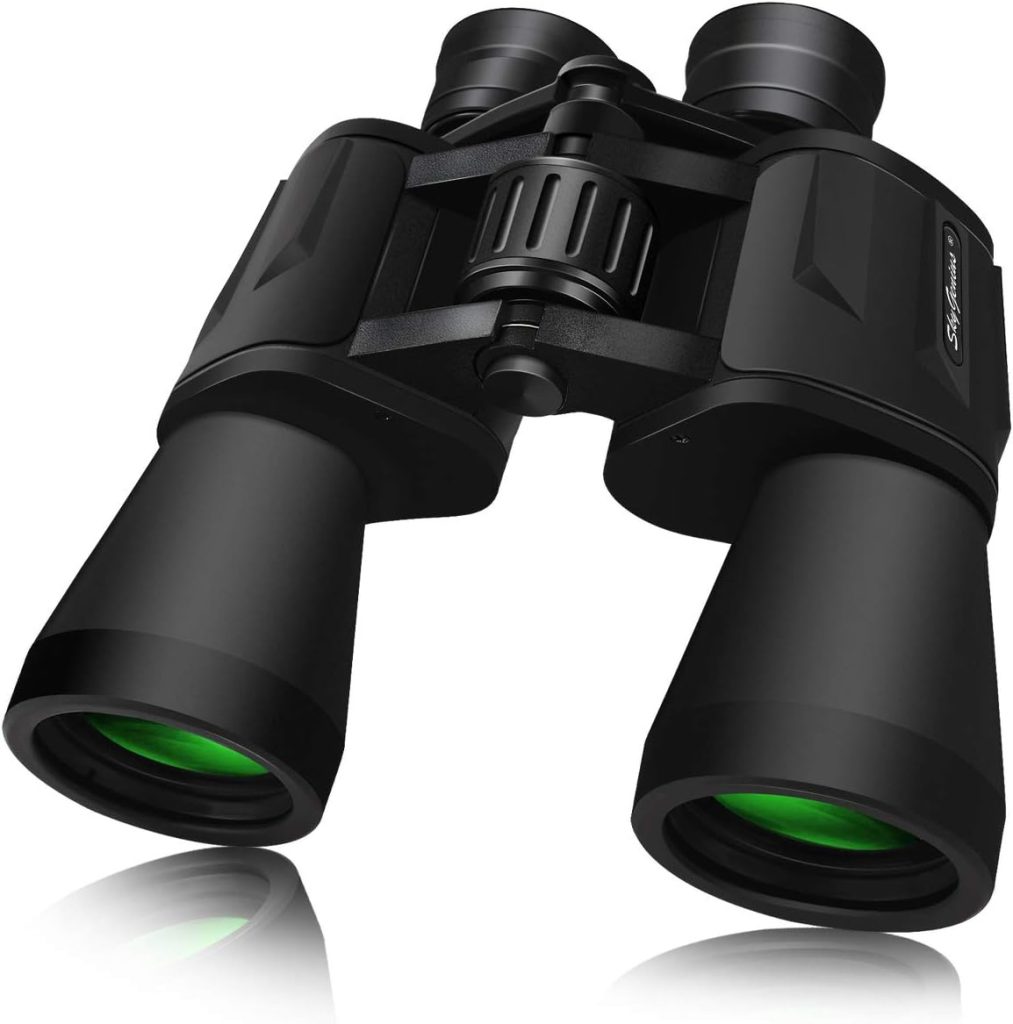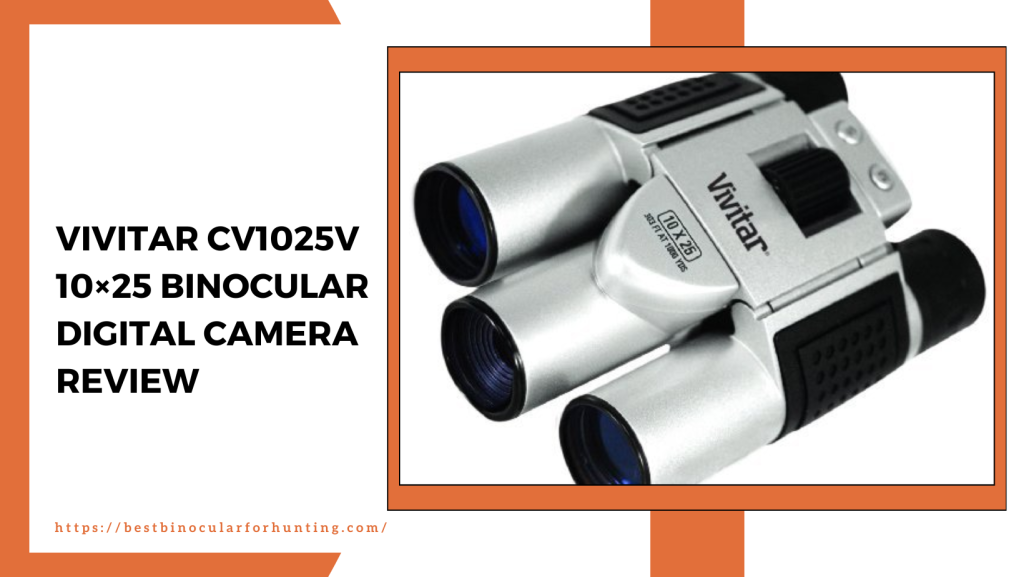When shopping for full-sized binoculars, two magnifications rise to the top for their versatility – 10x power and 20x power. Combined with the popular 50mm objective lens size treasured for light-gathering ability in twilight, we arrive at two stalwart options: the 10×50 and 20×50 configurations.
But which option better fits your needs? This guide compares 10×50 vs 20×50 binocular specs, performance differences, and usage scenarios to determine which suits typical hunting, birding, sightseeing, and stargazing applications. Let’s decode optical strengths by balancing magnification, field of view, image stability, and optical purity to make an informed choice.
Key Specifications
First, how do published specifications differentiate 10×50 and 20×50 binoculars? The numbers reveal initial clues on capability tradeoffs:
Comparison
| Metric | 10×50 Binoculars | 20×50 Binoculars |
|---|---|---|
| Magnification | 10x | 20x |
| Objective Lens Diameter | 50mm | 50mm |
| Exit Pupil Diameter | 5mm | 2.5mm |
| Relative Brightness | 25mm | 6.25mm |
| Field of View | 314 feet @ 1000 yards | 157 feet @ 1000 yards |
| Eye Relief | 15-25mm | 10-15mm |
| Weight | 27-42 oz | 27-42 oz |
Definitions
- Magnification: The multiplication factor determines how much closer objects appear through binoculars. 10x brings items 10 times closer than the naked eye.
- Objective Lens: The front external lenses reflect and focus target light through the oculars to your eyes. 50mm lenses excel at dawn and dusk light.
- Exit Pupil: The diameter measurement of focused beams exiting the ocular lenses into your pupils. Directly affects perceived brightness.
- Relative Brightness: A computed metric quantifying light transmission ability. Higher = brighter images in shadows and twilight.
- Field of View: The width of the total landscape visible through binoculars from left to right periphery at 1000 yard distance. Wider = easier to locate and track fast subjects.
- Eye Relief: The optimal distance eye pupils can stand behind oculars while maintaining full fields of view. Important for eyeglass wearers.
Let’s now analyze how these specifications translate into real-world performance.
Optical Strengths of 10×50 Binoculars

With moderately high 10x magnification plus excellent light admission from 50mm objectives, the 10×50 configuration offers stellar versatility at a typically affordable price point.
Bright Views in Lowlight
Thanks to a 5mm exit pupil diameter, 10×50 models transmit ample ambient light for serviceable images at dawn and dusk when wildlife movements peak. The generous 25mm relative brightness rating outshines many compact travel binoculars, especially helping hunters or wildlife observers who regularly use optics around sunrise or sunset.
Steady Image
While adding some handshake, 10x magnification remains usable for most users handheld without a tripod. The 10x zoom factor balances resolution boosts while keeping subject movement reasonably smooth and jitter-free as you scan and track objects. This makes 10x50s ideal for fluid viewing of subjects on the move like birds, deer or bears.
Wide Field of View
A 314 foot field of view at 1000 yards significantly outpaces most porro prism alternatives, providing users excellent landscape context for locating and framing subjects. The wide FOV produces a more immersive sight picture suited to following unpredictable animals on safaris or birdwatching highly erratic songbirds flitting through thickets.
Overall, the 10×50 formula strikes a leading balance of magnification, brightness and stabilization for crisp views in suboptimal light across wide swaths of terrain.
Optical Advantages of 20×50 Binoculars

What extra performance comes with doubling the magnification to 20x power? 20×50 binoculars up close resolving ability on distant terrain features and faraway fauna.
Resolve Fine Details
By boosting magnification to 20x, distant subjects fill more of the view with sharper detail visible when inspecting small features. Users can discern finer plumage patterns on birds, better analyze astronomical craters, read subtler animal behavior cues, inspect tiny map contours, and thoroughly scan hillsides for concealed game.
Extend Ranging Ability
Increased magnification extends practical ranging distances before images get too dim or shakey. For patient observers who typically glass from fixed vantage points across wide spaces, the power proves useful in calculating distances and counting points on the trophy games. Maximum effectiveness requires solid tripod or window mounting.
Highlight on Focused Area
Narrower FOV concentrating on a central 158 foot diameter picture area at 1000 yard distance puts emphasis directly ahead. This benefits observers with fixed fields of attention like scouring defined quadrants for airborne raptors or monitoring single watering holes and mineral licks.
If your needs demand extra acuity and reach over wider FOV, 20×50 binoculars edge out magnification limitations of 10x models.
10×50 vs 20×50 Binoculars Comparison
| Performance Factor | 10×50 Binoculars | 20×50 Binoculars |
|---|---|---|
| Brightness | ★★★★☆ Very Good | ★★☆☆☆ Average |
| Lightweight | ★★★★☆ Very Good | ★★★★☆ Very Good |
| Field of View | ★★★★★ Excellent | ★★☆☆☆ Average |
| Close Focus | ★★★☆☆ Good | ★★☆☆☆ Average |
| Eye Relief | ★★★★☆ Very Good | ★★★☆☆ Good |
| Image Stability | ★★★★☆ Very Good | ★★☆☆☆ Average |
| Small Details | ★★★☆☆ Good | ★★★★★ Excellent |
| Cost | ★★★★☆ Very Good | ★★★☆☆ Good |
Ideal Uses for 10×50 vs 20×50 Binoculars
With performance differences covered, which option makes sense for common optics applications?
10×50 Binoculars Ideal For:
- Hunting from tree stands or ground blinds
- Spotting backyard bird feeders and nests
- Searching for game crossing open meadows
- Safari rides tracking unpredictable animals
- Aircraft observation for pilots
20×50 Binoculars Ideal For:
- Inspecting taxidermy mounts and specimens
- Locked down astronomical viewing
- Confirming bullet impacts on distant targets
- Spotting wildlife along clearly defined waterways
- Fixed roofscape viewing of urban birds
Evaluate planned use cases determining necessary magnification power, brightness, and field of view breadth.
Buy Once, Cry Once: Spending Up on Optical Clarity
When choosing between 10x or 20x binoculars, also consider optical quality variables that influence the viewing experience:
Phase Correction
Proper alignment of light wave peaks and troughs prevents blurring around subject edges. Roof prisms require precision grinding attaining phase coherence absent in cheap models.
Lens & Prism Coatings
Meticulously applying anti-reflective metallic coatings to all optical path surfaces boosts light transmission 5-15% per interface adding up fast.
Collimation
Precisely aligning lenses and prisms ensures sharp images across the entire field of view with no distortion on periphery.
Waterproofing
O-ring seals preventing internal fogging serve critical in humid climates or rainy conditions.
Take time deciphering quality markers like “phase corrected”, “fully multi-coated”, specifications for waterproof integrity, and brands with reputations for rigorous quality control. Once stretched past introductory magnification tiers, minor boosts cost exponentially more. So buy once with a few extra dollars upfront, then cry once enjoying years of crisp, bright viewing and durable waterproofing rather than replacing bottom-barrel bins every year or two.
Bottom Line
While note quite apples to apples, both 10x and 20x binoculars deliver excellent functionality. Determining ideal magnification requires honest assessment of intended use scenarios and desired portability. For maximum versatility at a palatable price, 10×50 binoculars serve most sportsmen and casual nature enthusiasts wonderfully. More patient analyzers prioritizing detail over wide coverage may reap advantages stepping up to 20x models.
But remember, dumping money solely chasing magnification often disappoints compared to investing in quality glass and coatings first, then selecting appropriate zoom power for common applications. Define actual needs, then objectively evaluate instrument features balancing key performance attributes. And wherever your optics adventure leads, may the bright wide vistas greet you beautifully!
Frequently Asked Questions
Still deciding between 10×50 and 20×50 binoculars? Here are answers to common questions:
Do 20×50 binoculars make a good all-around choice?
For most recreational users, 20x proves too magnified for versatility. The narrow field of view and amplified handshake frustrates attempting to track moving animals or birds. Lower 10x power better balances resolution and steadiness for general nature observing, hunting, spectating events, and relaxed sightseeing. Reserve 20x models for specialty long distance fixed viewing.
Which has a larger exit pupil – 10×50 or 20×50?
The exit pupil diameter (light beams entering your eyes) equals the objective lens diameter divided by the magnification. So 10×50 binoculars project a 5mm exit pupil (50mm lenses ÷ 10x magnification) while 20×50 models output a tighter 2.5mm exit pupil (50mm ÷ 20x). These beams must fit over your open pupils, so the larger 5mm proves brighter.
Can eyeglass wearers use 20x50s effectively?
It depends. The narrow 2.5mm exit pupil leaves no wiggle room compared to more forgiving 5mm beams from 10×50 configurations. But 20x50s still allow eyeglass use if ocular lenses sufficiently recess into the eyecups. Check manufacturer eye relief specs and test instrument fit before buying. Expect some FOV clipping on periphery.
Which option works better under thick canopy and forested shade?
The 10×50’s light gathering superiority sees details subtle shadows obscure through dimmer 20x models. Brighter exit pupils and high relative brightness ratings preserve illuminated images where less ambient light penetrates dense vegetation. So 10x power excels beneath thick forests.
Do I need a tripod with 20x magnification?
At 20x power, the slightest handshake gets amplified degrading optical performance. Most users struggle to get truly crisp steady views handholding such high zooms for extended glassing sessions. A sturdy tripod becomes mandatory to access the resolution potential without undue motion blur. Prepare to mount up with 20x configurations.
Hopefully, these answers help further weigh 10x vs 20x selection factors. Analyze individual use cases to determine the best balance of optical specs suiting portable versatility needs in the field.



